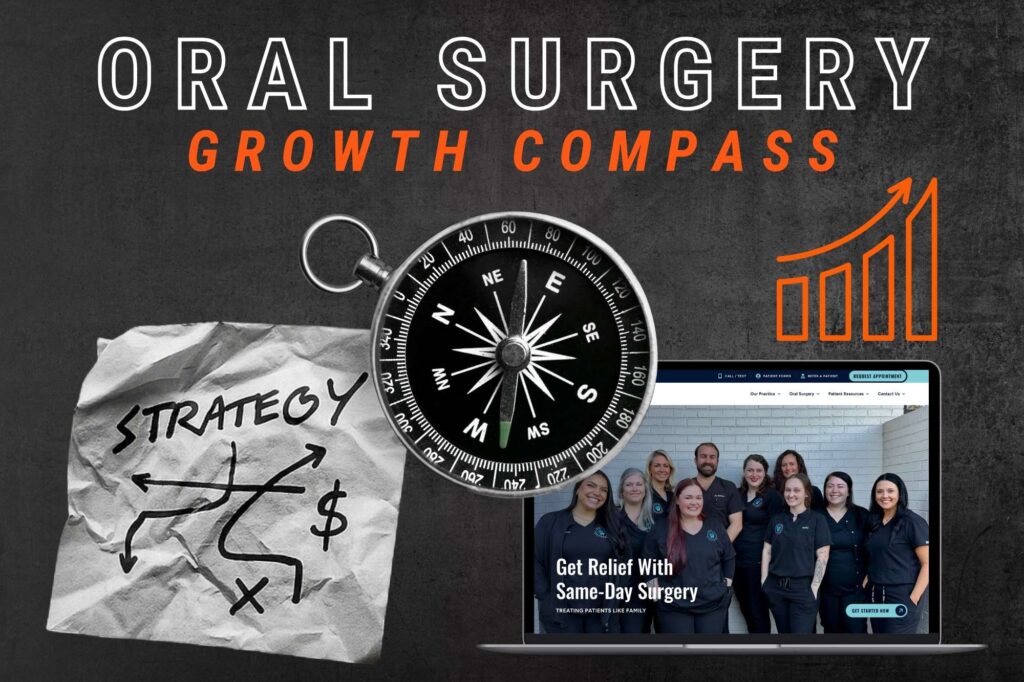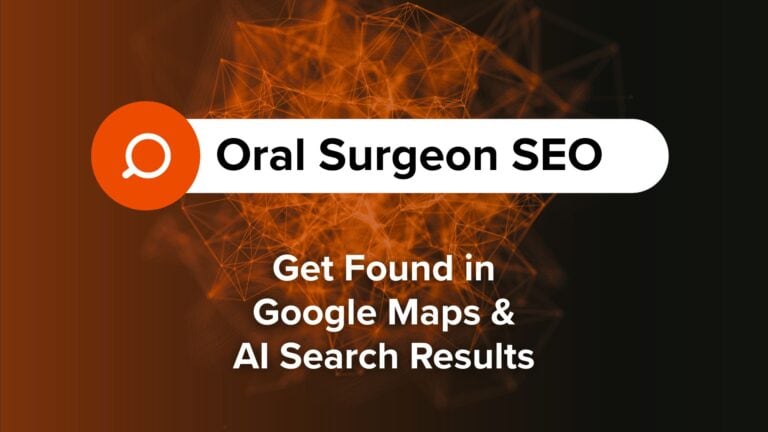Grow Smarter: Strategic Insights for the Future of Oral Surgery in 2025 & Beyond
The oral surgery market is experiencing unprecedented transformation, creating extraordinary opportunities for forward-thinking practices while leaving others vulnerable to commoditization and competitive pressure. With the global oral surgery market projected to reach $8.7 billion by 2030, understanding the strategic forces reshaping our industry has never been more critical.
Download Free Ebook
Current State of Oral Surgery Practice Management
The oral and maxillofacial surgery sector demonstrates remarkable resilience despite economic fluctuations. Key market indicators reveal:
Market Growth Projections:
- Global oral surgery market growth from $4.43B (2023) to $8.7B (2030)
- North American market commanding 41.8% share with 7.2% CAGR
- Private practice segment representing $3.1B with fragmented growth patterns
Procedure Volume Trends:
- Dental implants: 22% year-over-year patient inquiry growth
- Full-arch restorations: 31.7% volume growth in comprehensive solution practices
- Third molar extractions: Stable volume but facing 11.3% margin compression
- Corrective jaw surgery: 8.7% growth concentrated in subspecialized practices
Dental Practice Competition Analysis
The competitive landscape for oral surgery services continues evolving rapidly:
Practice Model Distribution:
- Traditional solo practitioners: 46% of market (declining from 63% in 2020)
- Group practices (3+ surgeons): 27% of market (increasing from 18% in 2020)
- DSO-affiliated surgeons: 18% of market (doubling from 9% in 2020)
Critical Competitive Insights:
- 73% of practices lack clearly articulated differentiation
- 82% use identical terminology to describe services
- 91% fail to communicate outcome differences
- Average urban competition: 9.7 practices within 10 miles
Technology Integration in Dental Practices
Dental practice technology adoption now defines competitive positioning:
Critical Technology Implementation Rates:
- Cone Beam CT: 92% adoption
- Digital impressioning: 87% adoption
- 3D treatment planning: 79% adoption
- Dynamic navigation systems: 31% adoption
Technology Impact on Practice Growth: Practices with comprehensive technology integration report:
- 31% higher case acceptance rates
- 27% higher perceived value scores
- 23% greater ability to attract premium fee-for-service patients
- 19% improved operational efficiency
Patient Journey Transformation in Dental Care
The dental patient experience has fundamentally shifted to digital-first decision making:
Digital Decision Process:
- 73% of patients begin their search online
- 81% research after hours (7pm-11pm)
- Average research time: 3.7 hours before contact
- 78% check multiple review platforms
Value-Perception Drivers:
- Perceived expertise/specialization (87% influence)
- Technology access/advancement (79% influence)
- Pain management options (73% influence)
- Timeline clarity/efficiency (68% influence)
- Financial transparency (64% influence)
Dental Practice Marketing Strategy Evolution
Traditional dental marketing approaches are delivering diminishing returns. Successful practices now focus on:
Direct Patient Acquisition:
- Self-referrals now represent 27% of new patients (up from 14% in 2020)
- Online search as initial contact point for 73% of self-referred patients
- Treatment acceptance rates higher for self-referred patients (72% vs 63%)
Referral Relationship Management:
- General dentist referrals declining to 61% (from 78% in 2020)
- Top 20% of referrers provide 73% of patients
- Only 12% of dentists refer exclusively to one surgeon
Procedure-Specific Growth Opportunities
Full-Arch Restoration Market Analysis
Dental implant marketing for full-arch cases presents significant opportunity:
- Patient demand growth: 31.7% CAGR through 2028
- Average case value: $25,000-$55,000
- Market penetration: Only 7.2% of potential patients
- Education-driven case development shows 47% higher success rates
Implantology Practice Development
The dental implant practice landscape rewards specialization:
- Multi-implant case development offers higher margins and less competition
- Technology-centered positioning creates significant differentiation
- Practices with systematized implant protocols report 3.7× higher case acceptance rates
Dental Practice Valuation and Growth Planning
Strategic dental practice growth requires systematic approach:
Market Assessment Components:
- Competitive landscape analysis
- Demographic opportunity mapping
- Referral potential evaluation
- Service demand assessment
- Capability alignment review
Implementation Success Factors:
- Capability-opportunity alignment increases success by 73%
- Proper sequencing improves ROI by 83%
- Strategic focus on high-return procedures increases profitability by 43%
Future Trends in Oral Surgery Practice
Dental industry trends for 2025-2030 include:
Technology Adoption:
- AI-assisted diagnosis entering mainstream adoption
- Dynamic navigation in rapid growth phase
- Virtual consultation becoming standard practice
- Robotic surgical assistance expanding in specialty applications
Demographic Changes:
- Baby boomers driving peak full-arch restoration demand
- Millennials prioritizing preventive care with aesthetic focus
- Generation Z expecting technology integration and convenience
Building a Scalable Oral Surgery Practice
Whether focused on dental practice expansion or operational excellence, successful growth requires:
Operational Excellence Systems:
- Process mapping and refinement
- Technology-enabled efficiency
- Data-driven decision making
- Continuous improvement culture
Strategic Positioning Elements:
- Specialized focus areas with depth over breadth
- Proprietary process development and documentation
- Outcome measurement and guarantees
- Experience design creating distinction
Conclusion: Strategic Imperatives for Oral Surgery Success
The oral surgery landscape rewards practices that build strategic insight rather than rely on industry convention. Success factors include:
- Developing clear competitive differentiation
- Implementing comprehensive technology integration
- Creating systematic patient experience excellence
- Building capability-aligned growth strategies
- Establishing premium value positioning
The practices achieving the most remarkable results recognize that strategic insight without immediate action creates zero value. The market advantages available today may not exist tomorrow.
Ready to transform your oral surgery practice with strategic insights and proven frameworks? At HIP, we specialize in helping oral surgeons develop data-driven growth strategies that align with market opportunities. Schedule your free strategy call today!



